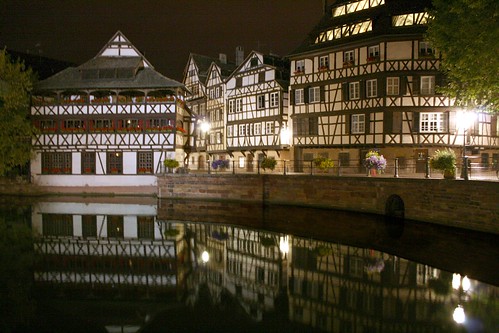There has been and there remains today a strong Germanic influence on the architecture found in the Alsace region of France. Alsace house types and the materials used can be categorized in the wide German «pan de bois» (half-timbering) architectural family. This architectural family uses many local symbols and decorations. These symbols appear on porches, doors and on the pieces of wood used to make the half-timbered walls.
Due to the climate the roof of the typical Alsace property is predominantly steeply pitched (up to 60 degrees) and the typical roof covering is flat clay tiles (tuiles écaille alsaciennes) which are specific to the Alsace and neighbouring areas of north eastern France. Tuiles écaille alsaciennes tiles are also called “queue-de-castor” tiles, this refers to their shape, similar to that of a beaver tail. This type of tiles is also common in the Jura, Savoie, southern Germany and in Switzerland.
Houses in the Alsace plains traditionally have an enclosed courtyard not directly accessible from the street and are traditionally positioned next to each other, forming almost neverending streets. Houses in the Outre-Forêt and Sundgau areas of Alsace posess open courtyards and are of a monobloc construction style.
Houses in the Alsace plains traditionally have an enclosed courtyard not directly accessible from the street and are traditionally positioned next to each other, forming almost neverending streets. Houses in the Outre-Forêt and Sundgau areas of Alsace posess open courtyards and are of a monobloc construction style.






